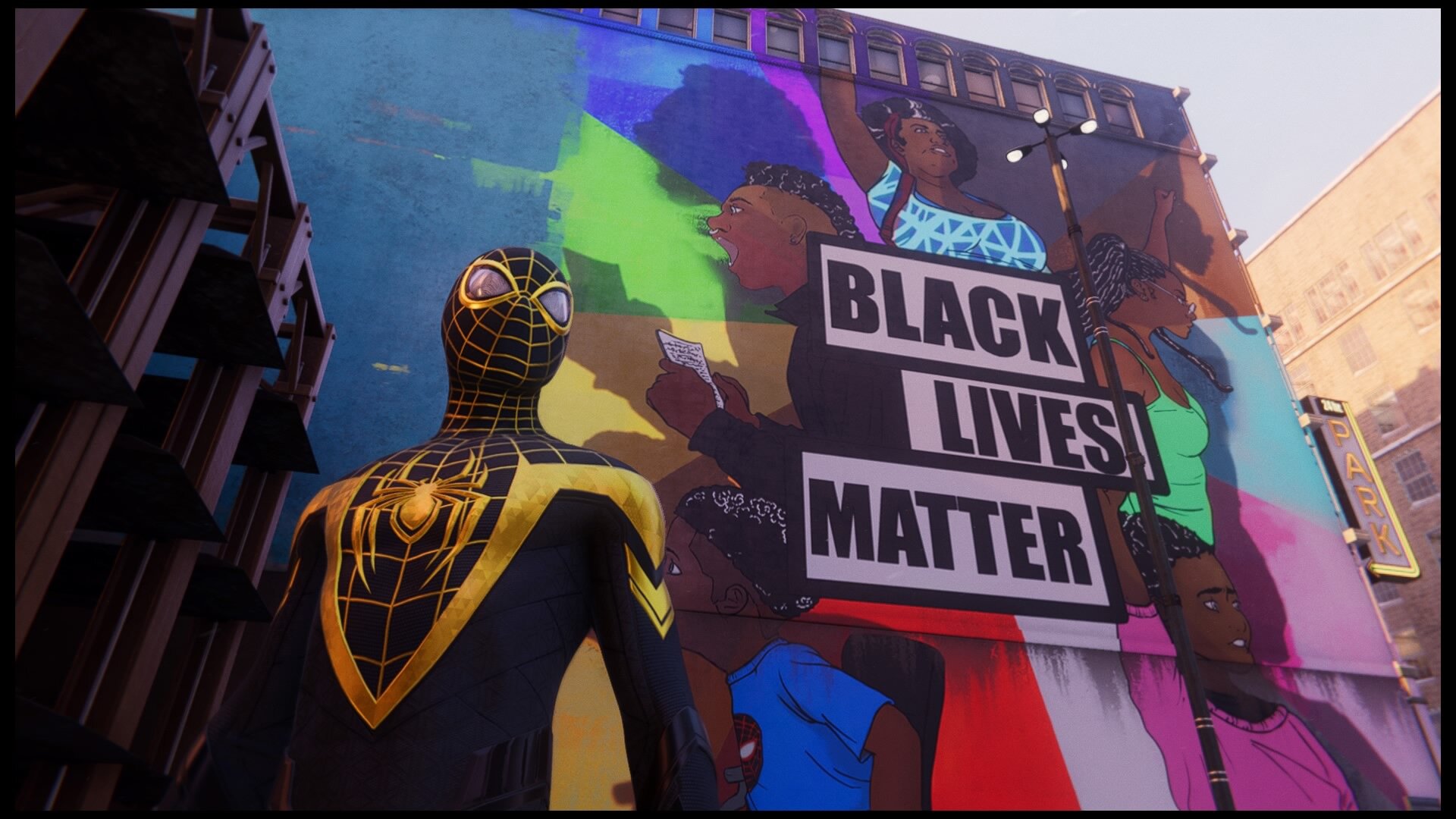Spider-Man: Miles Morales review
I’ve been wondering how to classify Spider-Man: Miles Morales. Is it a sequel to Marvel's Spider-Man (2018)? Is it an expansion? Should we consider it a spin-off? However you choose to categorize it, one thing is certain: this game kicks serious ass.
Spider-Man: Miles Morales takes everything you loved about the first game and refines it. This is the same New York you’ve already swung through as Peter Parker…except now it’s Christmastime! And yes, web-slinging and combat remain more-or-less the same. But Miles definitely has his own distinct style for both, plus a couple additional powers that Pete never had access to.
Miles’s bioelectric Venom abilities make for some great gameplay augmentations, as does his temporary invisibility (called “Camouflage”). But it’s worth noting that these extras aren’t the only things differentiating the two Spider-Men. Miles’s style of web-slinging is generally more acrobatically youthful, looking a bit wilder and more improvisational. His fighting style is also different, emphasizing more kicks and less of Peter’s luchador-esque throws. I especially like Mile’s takedowns, each of which is super slick and just look cool as hell.
Venom-infused strikes have the biggest impact on the game’s combat, greatly expanding Miles’s options for fierce flashy fisticuffs. All this Venom stuff is also crucial to the game’s story, which perhaps leans a bit too heavily on Miles being a human battery for a great deal of its plot. It does ultimately make for a thoroughly satisfying ride though, so I won’t complain.
It almost felt like our new Spider-Man could do too much in fights at times, as I struggled somewhat to get back into the groove of this game’s style of combat. Once the muscle memory returned and I was swinging like a champ, I found that the Venom Punch was just too cool to not use all the time. The Venom Smash and Venom Jump are also extremely useful for crowd control.
But even with all your new tools, this game manages to keep combat challenging throughout. Fights demand that you use the right attacks for the right enemies—also, don’t forget to dodge!—or you will see that lifebar drained in seconds. I do appreciate this “tough but fair” approach to smart combat…even if I still kinda prefer wailing on hapless street thugs to going toe-to-toe with the bigger, tougher, more powered-up enemies. Every encounter, from small street skirmishes to a partly-cinematic boss fight, requires the player to pay attention and avoid button-mashing.
And hey, if a fight gets too daunting, you can often turn the tables on your attackers by turning invisible. Tapping Up on the D-pad enables Camouflage, which makes Miles go invisible for a short amount of time. If that brief window gives you enough time to hide—probably by zipping up to someplace high—then an active combat situation can go back to being a stealth encounter, allowing you to pick off a few more enemies ninja-style.
Oh man, and the stealth segments—I just love them so much! Sure, I know that stealth missions in action games may have earned a bad reputation for killing the pacing, along with the fun. But especially in Spider-Man games, it’s like my favorite thing of all. Snatching up unsuspecting guards, leaving them cocooned in webbing, stuck to the ceiling or whatever, it just never gets old. And the fact that Miles’s Camouflage can give you a do-over in case you happen to get spotted is just icing on the stealth cake.
On the narrative side of things, the story here is just as good as the spectacular tale from the first game. It is a shorter experience to be sure, but no less poignant, and it all feels more personal somehow. Themes of family and community are woven so strongly throughout this story, they’re probably even prominent than Miles’s hero’s journey itself. The dynamic between Miles and his childhood bestfriend Phin (Spider-Man and the Tinkerer, respectively) is quite good, and only one part of the greater Morales Family story, which definitely shines here. The relationship between Miles and his uncle Aaron (aka “the Prowler”) is especially compelling.
Even beyond Miles and his family, Harlem really comes to life in this game. Representation matters, and this game proves that beautifully. Several side characters get to have their own memorable moments, but my favorite has to be Hailey Cooper. A young street artist, Hailey has impaired hearing and communicates entirely through sign language. Miles walks around Harlem speaking English to some friends, Spanish to others, and then, with Hailey, he signs. Something about that is so sweet, so genuinely heartwarming, it pulls at the old heartstrings every time. Oh yeah, this game definitely brought me to tears as well, which PlayStation exclusives seem to be making a habit of.
At the end of the day, Spider-Man: Miles Morales is an excellent follow-up to Insomniac Games’ already amazing adventure. Spider-Man (2018) was basically the perfect superhero adventure, and this is essential just that game trimmed of all fat. It’s also been injected with considerable style, charm, and sheer heart, thanks to Into the Spider-Verse’s standout protagonist. This is not only a near-perfect sequel, but the Miles-focused adventure we’ve all been waiting for.
(Sequel! OK yeah, I guess I decided it’s a sequel then.)





